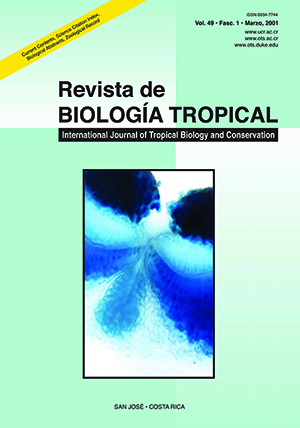Abstract
Many columnar cacti are bat pollinated. It has been suggested that this kind of pollination would be more important in tropical than in temperate regions where flowers are open only one night. Thrichocereus pasacana produces big and resistant white flowers. We analyzed flower characteristics, floral cycle, stigmatic receptivity, nectar production, pollen presence and floral visitors in a T. pasacana population at National Park Los Cardones (Salta, Argentina) in November 1997. Flower features were constant between individuals of the population. Flowers start opening at evening and anthesis time is from 18 to 40 hs. The estigma was receptive throughout the floral cycle. Anther dehiscence occurs with flower opening. Nectar production was highest between 18 to 24hs. Although T. pasacana are open during the night, floral visitors are diurnal. The most frequent was Xylocopa sp. In the study area, nectarivorous bats were not detected. The morphological features of T. pasacana flowers were similar but bigger compared to other columnar cacti. Anthesis time was also longer while nectar production was lower. T. pasacana pollination at National Park Los Cardones is done by bees.##plugins.facebook.comentarios##

This work is licensed under a Creative Commons Attribution 4.0 International License.
Copyright (c) 2001 Revista de Biología Tropical
Downloads
Download data is not yet available.


